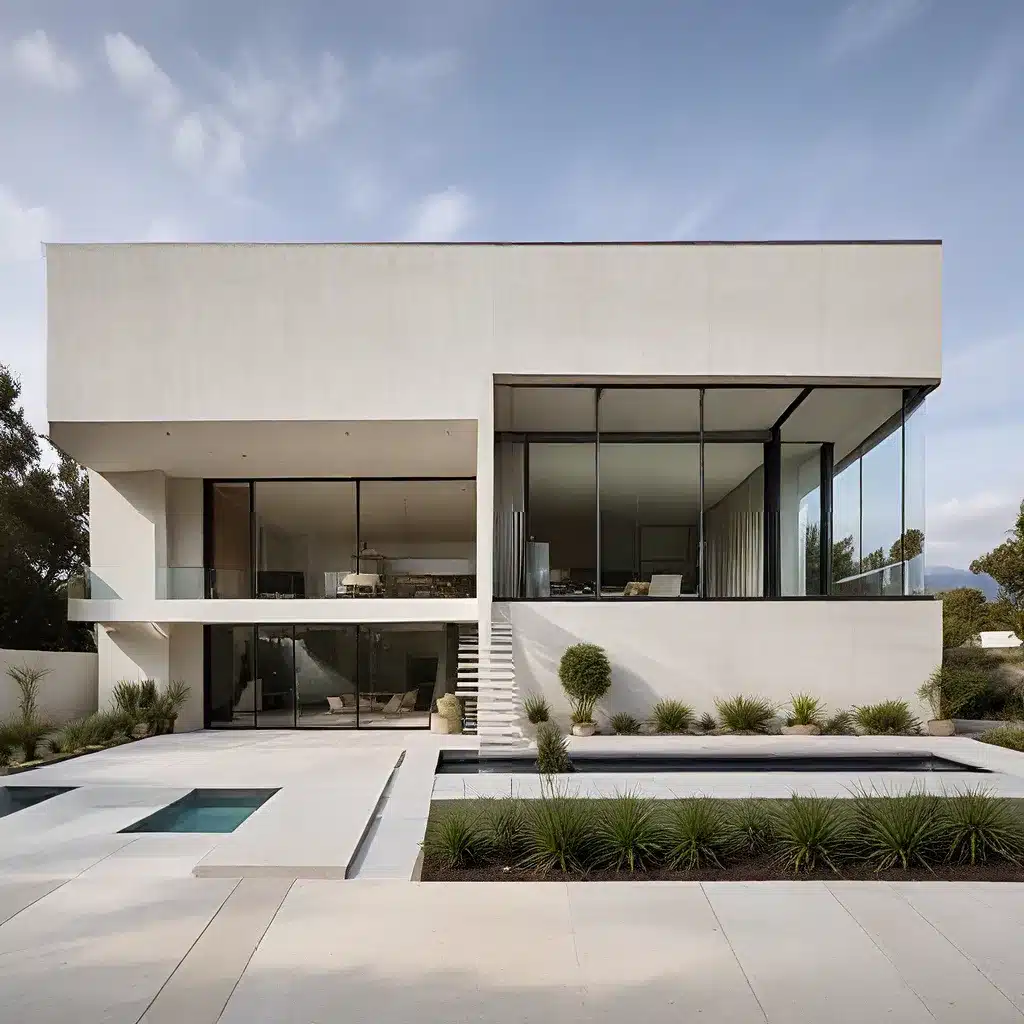
In the ever-evolving world of interior design, one architectural style has captivated the hearts of homeowners, design enthusiasts, and luxury-seekers alike: Modernist design. Originating in the mid-20th century, this minimalist yet sophisticated approach to living spaces has left an indelible mark on the landscape of home decor, offering a refreshing alternative to the ornate and cluttered aesthetic of the past.
Embracing the Essence of Modernist Design
At the core of Modernist design lies a profound appreciation for clean, minimal lines and a harmonious integration of form and function. This architectural philosophy eschews unnecessary ornamentation, favoring a streamlined, almost sculptural approach that celebrates the inherent beauty of materials and the efficiency of space utilization.
One of the hallmarks of Modernist structures is the seamless indoor-outdoor connection, where expansive glass walls and open floor plans blur the boundaries between the built environment and the natural world. This deliberate integration invites the serene beauty of the outdoors to become an integral part of the living experience, fostering a sense of tranquility and connectivity that is the hallmark of the Modernist aesthetic.
Tracing the Roots of Modernist Design
The origins of Modernist design can be traced back to the early 20th century, when visionary architects and designers began to challenge the status quo of traditional architectural styles. Pioneers like Le Corbusier, Ludwig Mies van der Rohe, and Richard Neutra championed a new approach that emphasized functionality, simplicity, and the integration of technology with the built environment.
Modernist design found its early expression in the International Style, a movement that rejected the decorative excesses of the past in favor of a pared-down aesthetic that prioritized efficiency, practicality, and a harmonious relationship between structure and setting. This ethos quickly took root in various regions, including the West Coast of the United States, where the Desert Modernism style emerged as a unique expression of the Modernist philosophy.
Discovering the Allure of Desert Modernism
In the sun-drenched landscapes of Palm Desert, California, the principles of Modernist design found a natural expression in the form of Desert Modernism. This regional interpretation of the Modernist aesthetic seamlessly blended the clean, minimal lines of the movement with the arid, rugged beauty of the desert environment.
The defining features of Desert Modernism include:
- Clean, Minimal Lines: Flat roofs, wide overhangs, and a focus on geometric forms create a streamlined, uncluttered aesthetic.
- Indoor-Outdoor Integration: Expansive glass walls, open floor plans, and thoughtfully designed outdoor living spaces foster a harmonious connection between the built and natural environments.
- Innovative Use of Materials: The use of locally-sourced, often natural materials like stone, adobe, and concrete reflects a sensitivity to the desert landscape and a commitment to sustainable design.
The architects who left an indelible mark on the Desert Modernism movement, such as William Krisel, Richard Neutra, and Albert Frey, were not merely constructing buildings – they were crafting holistic living experiences that seamlessly integrated the built environment with the natural surroundings.
The Enduring Appeal of Modernist Masterpieces
As you wander through the sun-dappled neighborhoods of Palm Desert, the Modernist structures that dot the landscape captivate the senses with their timeless elegance and innovative design. From the iconic Kaufmann Desert House to the stately Twin Palms and Vista Las Palmas communities, each architectural marvel tells a story of visionary thinking, meticulous craftsmanship, and a deep reverence for the surrounding environment.
These Modernist masterpieces are not merely buildings; they are living embodiments of a lifestyle that celebrates simplicity, functionality, and a profound connection to the natural world. Their clean lines, thoughtful use of materials, and seamless integration of indoor and outdoor spaces create a sense of tranquility and harmony that continues to captivate design enthusiasts and homeowners alike.
Democratizing Modernist Design: The Rise of Tract Homes
As the allure of Modernist design grew, a remarkable shift occurred in the architectural landscape of Palm Desert and the surrounding areas. The post-World War II housing boom gave rise to a new phenomenon: the affordable Modernist tract home. These mass-produced housing communities, designed by visionaries like William Krisel, brought the principles of Modernist design to the masses, democratizing a previously exclusive architectural style.
These tract homes, characterized by their clean lines, open floor plans, and abundant natural light, became a testament to the power of Modernist design to transform everyday living spaces. By making these innovative design concepts accessible to a wider audience, the tract home developments in Palm Desert played a pivotal role in embedding the Modernist aesthetic into the fabric of American life, forever shaping the way we think about our living environments.
The Enduring Legacy of Modernist Design
Today, the Modernist structures that grace the landscapes of Palm Desert and beyond continue to captivate and inspire. From the annual Modernism Week celebration to the preservation efforts that safeguard these architectural gems, the legacy of Modernist design remains firmly rooted in the collective consciousness of design enthusiasts and homeowners alike.
As homeowners and design professionals seek to create spaces that exude a sense of timeless sophistication and harmonious living, the allure of Modernist design endures. By embracing the principles of clean lines, thoughtful integration with the natural environment, and a harmonious blend of form and function, Urban Grace Interiors helps clients achieve the serene, luxurious living experiences that define the Modernist aesthetic.
Whether you’re drawn to the captivating minimalism of Desert Modernism or the enduring appeal of Modernist masterpieces, the Modernist design movement continues to shape the way we envision and create our living spaces. By honoring the legacy of this iconic architectural style and incorporating its timeless principles, we can elevate our homes to be not just shelters, but sanctuaries that reflect our deepest values and aspirations.

